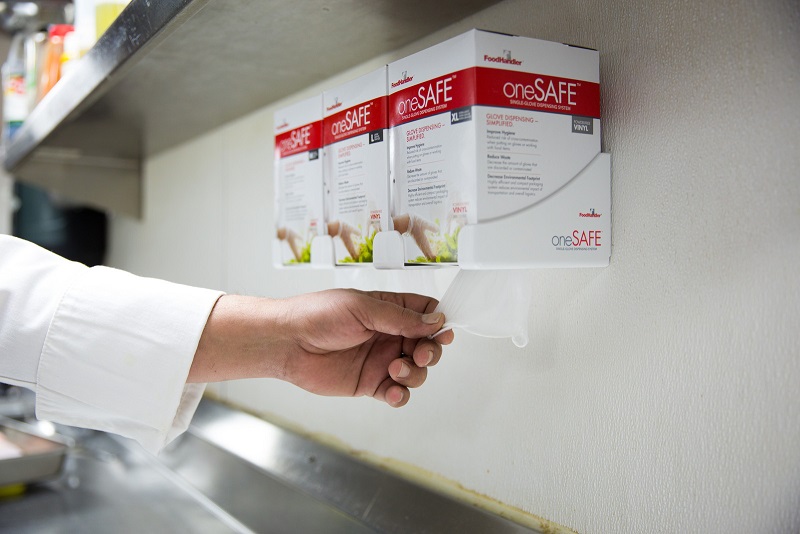How Effective is Your Food Safety Training?
 Basic food safety in a restaurant kitchen is not rocket science, but critically important for the crew to take the time to learn about it and for managers to set the example each day. Customers never expect or want to see a manager, chef, or a crew member make a very visible food safety mistake, like not washing hands before food prep and gloving, or touching their face or hair while prepping or handling food. Have we all seen it happen in our restaurant or as a customer elsewhere? Certainly. Are you using some creativity in your current training methods to help your staff “get it” so to speak, and reflect positive behaviors regarding food safety?
Basic food safety in a restaurant kitchen is not rocket science, but critically important for the crew to take the time to learn about it and for managers to set the example each day. Customers never expect or want to see a manager, chef, or a crew member make a very visible food safety mistake, like not washing hands before food prep and gloving, or touching their face or hair while prepping or handling food. Have we all seen it happen in our restaurant or as a customer elsewhere? Certainly. Are you using some creativity in your current training methods to help your staff “get it” so to speak, and reflect positive behaviors regarding food safety?
Effective food safety programs tap the psychology of how people learn and make the education fun. Your well thought out training methods might also help reduce the employee turnover. Illustrate your points to the crew with real life examples from your experience and use humor. You can even use past mistakes to make a point. Food safety knowledge is such an important factor to a restaurant’s success, but think of the old simple adage about learning:
TELL ME > I’LL FORGET;
SHOW ME > I’LL REMEMBER;
INVOLVE ME > I’LL UNDERSTAND.
For each basic concept in food safety, teach the crew “who, what, where, why, and when”. Sometimes managers stop at the “show me” step and don’t take the time to involve the veteran crew along with a new crew member—particularly on the most simple food safety concepts like portioning, handwashing, when to use gloves, how to clean a piece of equipment, using a thermometer and learning what are the correct temperatures. Use colorful signage, online basic training, videos, or workbooks to read, but don’t stop there.
Positive Reinforcement — Have you done a fun verbal quiz lately with your crew about what are the correct temperatures for your foods? Do YOU know them and are they posted in the prep area? Positive reinforcement affects behaviors the most, even though behavioral changes are difficult. Rewards/recognition for any training is needed with ongoing participation by management and employees. Examples & key tips:
- REMEMBER – You get ALOT more with sugar than a baseball bat…
- Any kind of recognition & daily—become watchful to catch the good actions
- Team building skills are needed in food service—the veterans need reinforcement too
- Mention of their good practices on a colorful bulletin board
- Newsletter mention or local newspaper article about training of group
- Certificates of training or a “leader” job title
- Ask the local health department for training assistance—usually it’s free & onsite
- Monetary rewards, movie passes, or any kind of incentives if possible
- THANK YOUS! They’re A Biggie!!
Bottom Line: There are plenty of options out there for manager certification and crew level training that is well worth the cost. Check out new online options to save time and dollars. Most employees are not computer-phobic with a little help from their management. The crew needs direct involvement in the food safety learning process – NOT JUST DO AS I SAY. Think a bit like a customer and then, do even more to make that customer notice good food safety practices through the actions of your well trained crew!
***
About the Author: Lacie Thrall

This information is provided as a general guideline and is not intended to be, nor does it, constitute legal or regulatory advice. Additional Federal regulations may apply to your particular circumstances. State, regional and local laws, ordinances and regulations may also apply.
READ MORE POSTS
Fetching a Pail of Good, Safe Water
In the ambitious fight for food safety, don’t overlook the safety and quality of the crystal clear liquid coming out of your faucet. The United States has controls in place to ensure we have potable (safe) water that is treated and filtered to make it taste better and have no odor. Water standards and treatment are also important in food service so we don’t need a repairman twice a year to chip away the block of lime on the dishwashers heating element with a hammer and chisel in order to replace it.
Food Safety for Pork – Part 2
Continued from part 1...
Food Safety for Pork – Part 1
If you haven’t tasted pork lately because you are not a red meat fan (or the other white meat), there are a few changes in the nutritional value of pork, the pork cooking temperatures, and the variety of ways we consume it. The amount of pork the average American consumes hovers around 50 pounds a year. Although pork is the number one meat consumed in the world, there are some religious restrictions on consumption of pork. U.S. consumption of pork dropped during the 1970s, largely because its high fat content caused health-conscious Americans to choose leaner meats. Today's hogs have much less fat due to improved genetics, breeding and feeding.









